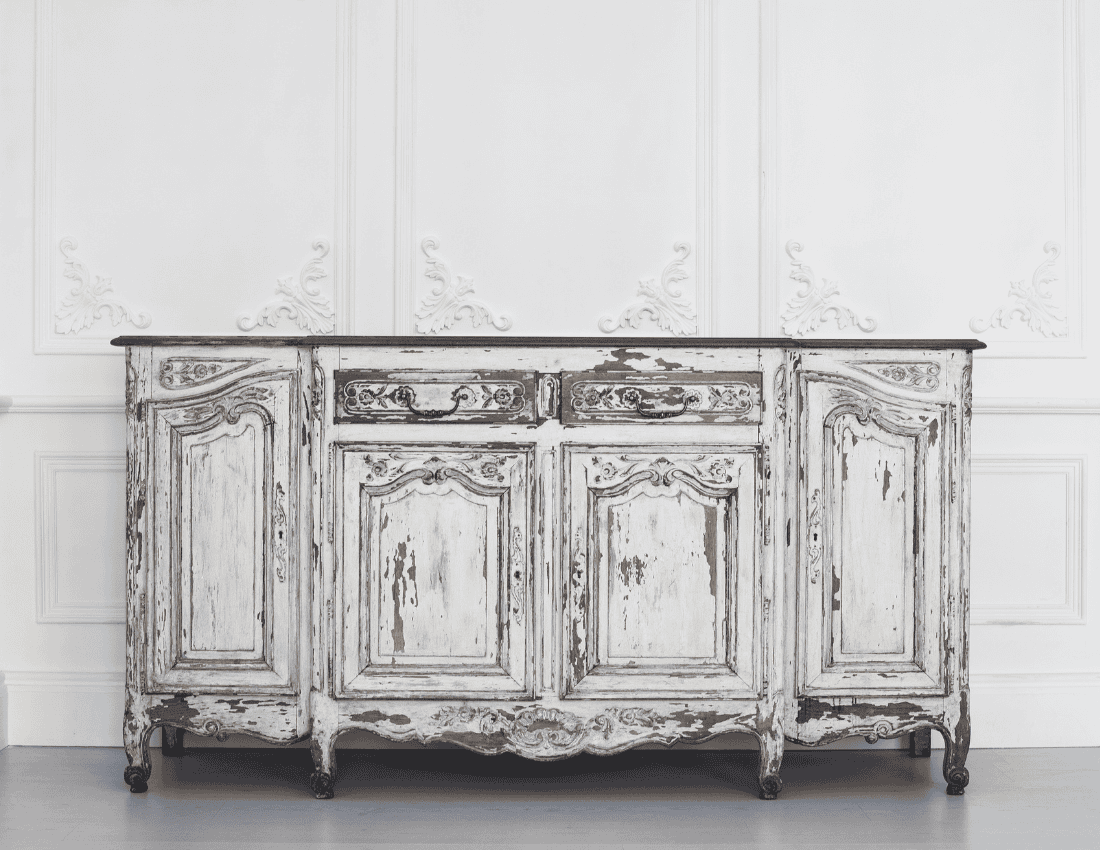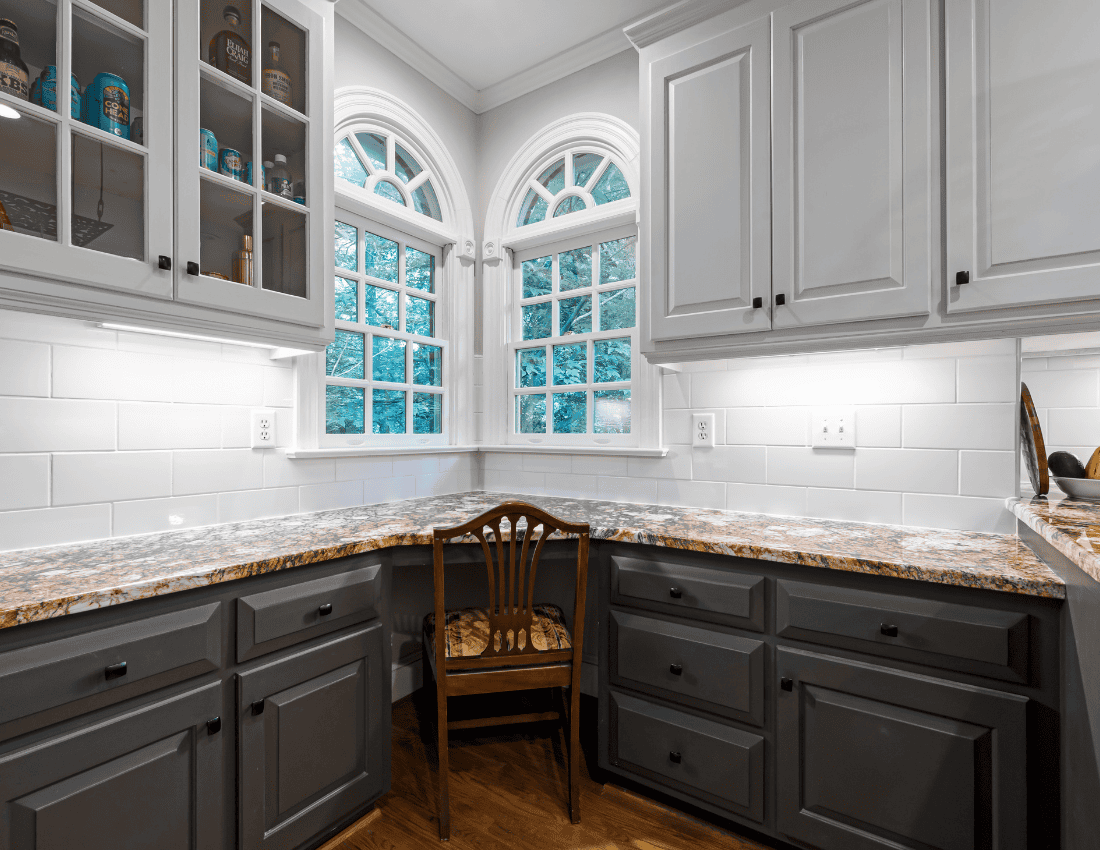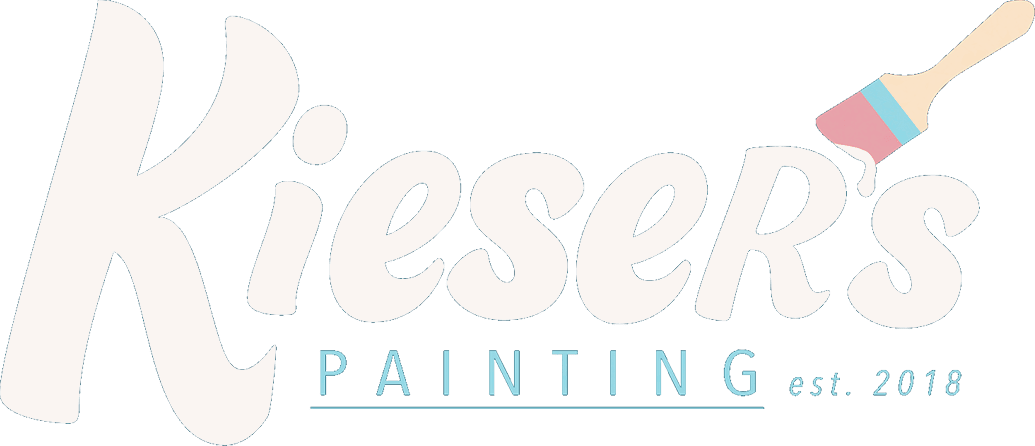A fresh coat of paint on cabinets should refresh your kitchen or bathroom, giving it that smooth, polished look. But what happens when that new finish starts peeling way too soon?
If you’re dealing with flaking, chipping, or bubbling paint, you’re not alone. Many homeowners in Omaha, NE, ask the same question: Why is fresh paint peeling off cabinets?
Cabinets go through a lot—heat, humidity, grease, daily wear and tear—making them more vulnerable to peeling paint if the prep work or materials aren’t right.
Let’s explore the top causes, expert solutions, and how cabinet painters in Omaha, NE, can help you achieve a flawless, long-lasting finish.
Key Takeaways:
- Skipping prep work is the biggest cause of peeling paint—cleaning, sanding, and priming are non-negotiable.
- Using the wrong primer or cheap paint leads to poor adhesion. Cabinets need high-adhesion primers and durable cabinet-grade paint.
- Moisture, heat, and grease break down paint over time. Kitchens and bathrooms have tough conditions that impact paint longevity.
- Rushing the drying and curing process weakens the finish. Cabinet paint needs time to set properly.

Why Is Fresh Paint Peeling Off Cabinets?
Freshly painted cabinets should last for years, but peeling paint happens more often than you’d expect. The most common reason is improper prep work—if cabinets aren’t cleaned, sanded, and primed correctly, the paint won’t stick.
Cheap or incorrect paint also plays a role, as not all paints are designed to handle daily wear and tear in kitchens and bathrooms. Humidity, heat, and grease exposure can speed up deterioration, causing bubbling and flaking.
Another issue is rushing the drying and curing process, leading to a weak finish that peels under pressure. In some cases, cabinets weren’t properly sealed against moisture, which allows water to seep under the paint. If you want long-lasting results, the right materials, prep work, and drying time are key.
Biggest Reasons Paint Peels Off Cabinets & How to Fix It
Peeling cabinet paint is frustrating, especially when you’ve invested time and money into a fresh coat. Cabinets take a lot of daily wear, from constant handling to exposure to heat, moisture, and grease.
If the paint starts chipping or bubbling within months, something went wrong in the process. Was it the prep work? The type of paint? Or maybe the drying time?
Let’s break down the biggest reasons fresh paint peels off cabinets and how you can fix it for a long-lasting, professional finish.
1. Skipping Proper Cleaning & Prep Work
One of the leading causes of peeling paint is poor surface preparation. Unlike walls, cabinets accumulate grease, dirt, and moisture, especially in high-traffic areas like the kitchen and bathroom. If the surface isn’t thoroughly cleaned, sanded, and primed, the paint won’t stick.
Why does this cause peeling?
- Grease and oil residue create a slick surface that prevents paint from bonding.
- Failing to sand glossy finishes means the paint won’t grip properly.
- Not removing dust before painting can lead to uneven coverage and poor adhesion.
Best fix:
- Use a degreaser to clean the cabinets before sanding.
- Sand with 220-grit sandpaper to remove gloss and improve adhesion.
- Wipe down the surface with a damp cloth to eliminate dust before priming.
2. Choosing the Wrong Primer or Skipping It Entirely
Primer is the foundation for a durable paint job. Using the wrong primer—or worse, skipping it—causes weak adhesion, leading to peeling and chipping over time.
What goes wrong?
- Using standard latex primer doesn’t bond well to slick cabinet surfaces.
- Ignoring laminate or veneer cabinets—these need a special bonding primer.
- Not sealing raw wood allows tannins to seep through, affecting adhesion.
Best fix:
- Use an oil-based or shellac primer for the strongest bond.
- For laminate or veneer, choose a specialized bonding primer.
- Always prime before painting, especially on raw wood.
3. Using the Wrong Type of Paint
Cabinets need a strong, durable paint that can handle everyday use, cleaning, and exposure to moisture.
What doesn’t work?
- Flat or matte paint absorbs grease and moisture, leading to peeling.
- Regular wall paint isn’t designed for cabinets and chips easily.
- Low-quality acrylic paint lacks the durability needed for long-term wear.
Best fix:
- Use cabinet-grade enamel, acrylic paint, or oil-based paint.
- Choose a semi-gloss or gloss finish for durability and easy cleaning.
4. Moisture, Humidity & Heat Exposure
Omaha, NE, experiences seasonal humidity changes, which can impact cabinet paint. Kitchens and bathrooms also deal with heat, moisture, and grease, all of which can weaken paint over time.
How does this cause peeling?
- Heat from stoves and dishwashers causes materials to expand and contract, leading to cracks.
- Excess humidity weakens paint bonds and allows moisture to seep under the surface.
- Steam, spills, and grease buildup accelerate paint deterioration.
Best fix:
- Use a dehumidifier while painting and after for better adhesion.
- Choose water-resistant primers and paints for high-moisture areas.
- Avoid painting on humid or rainy days.
5. Rushing the Drying & Curing Process
Cabinet painting is a process that requires time. If coats are applied too quickly or cabinets are used before the paint cures, peeling is likely.
Biggest mistakes:
- Applying coats before the previous layer dries leads to weak adhesion.
- Skipping the curing phase—cabinets need 2-4 weeks to fully harden.
- Using cabinets too soon—even if the paint feels dry, it may still be soft underneath.
Best fix:
- Allow 6-8 hours of drying time between coats.
- Let cabinets cure for 2-4 weeks before heavy use.
Get Beautiful, Long-Lasting Cabinets With Professional Cabinet Painting

If you’re looking for lasting, professional cabinet painting in Omaha, NE, our detailed approach ensures your cabinets stay flawless for years to come.
Here’s how we do it:
- Deep Clean & Degrease: We remove grease, dirt, and buildup so the paint adheres properly.
- Precision Sanding: Our cabinet painters in Omaha NE smooths out surfaces to maximize adhesion and prevent early peeling.
- High-Quality Primer Application: We use a bonding primer suited to your cabinet material (wood, laminate, veneer) to enhance durability.
- Cabinet-Grade Paint Selection: We apply long-lasting, moisture-resistant paint designed to withstand daily wear and tear.
- Expert Application: Each coat is applied evenly for a smooth, flawless look.
- Proper Drying & Curing Time: We allow full curing to ensure your cabinets last without peeling or chipping.
If you’re tired of peeling cabinet paint, let our experts refresh your kitchen cabinets, bathroom cabinetry, or built-ins with a flawless, professional finish. Kieser's Painting specializes in cabinet painting in Richfield, Waterloo, NE, and surrounding areas.
Call us at 402-866-8260 for your FREE estimate!

